When you think about the best Swiss food, rich cheese and top-quality chocolate spring straight to mind, but there’s so much more to Swiss cuisine than just these two indisputable staples.
The best Swiss food reflects the climate and the outdoor-forward lifestyle of Switzerland while honoring the country’s agricultural roots. Many traditional dishes are reflective of the cool alpine winters, which impact cities as well as mountainous areas, bringing a need for heartier fare.
These Swiss dishes also translate into satisfying feasts for those exploring the country through hiking, biking, and other adventurous pursuits in all four seasons.
Travelers with a sweet tooth are also in for a treat when visiting Switzerland, as this guide to the best Swiss food is about to illustrate.
Jump to a section of this article
A Brief Overview of Swiss Cuisine
Besides the delicious cheeses produced in all regions of Switzerland, meat and potatoes are the stars of the Swiss kitchen and make an appearance in many traditional Swiss dishes. As tastes evolve, it’s common to find vegetarian alternatives these days, especially in Switzerland’s cosmopolitan cities.
Kirsch (cherry brandy) is a cherished liqueur throughout Switzerland, often enhancing baked goods as well as savory dishes. The brandy is produced using fermented cherries and is one of the country’s oldest spirits. Besides being added to dishes, Kirsch is consumed neat, often during special occasions.
Switzerland’s gastronomy is influenced by the cuisine of its neighbors, namely Germany, France, and Italy. Some dishes can also be found on the other side of the border, although ingredients and cooking techniques do differ.
In German-speaking Switzerland, you will find a wide assortment of sausages, stews, and breads. The French-speaking regions rely on seasonal greens and local meat to create refined recipes. In Ticino, the Italian-speaking part of Switzerland, you’ll find polenta, risotto, and minestrone prevalent.

Best Things To Eat & Drink in Switzerland
1. Fondue
As one of the most iconic foods in Switzerland, Swiss fondue needs little by way of introduction. This bubbling pot of hot, melted cheese (usually a blend of Gruyere and Emmental) is served with bread cubes for dipping and is symbolic of Swiss culinary tradition.
The term fondue originates from the French verb fondre, which means to melt. Swiss fondue originated in the Alpine regions during the 18th century when villagers would use up stale bread, aged cheese, and wine to create an easy and hunger-quenching communal meal.
Most recipes still feature a splash of white wine or Kirsch. The dining experience represents togetherness, and it’s said that if a person drops a piece of bread into the pot, the next round of drinks is on them.
As the birthplace of the famous cheese, Gruyeres is one of the best places to eat cheese fondue in Switzerland for an authentic mountain experience. However, this classic dish is available in all cities, towns, and villages.
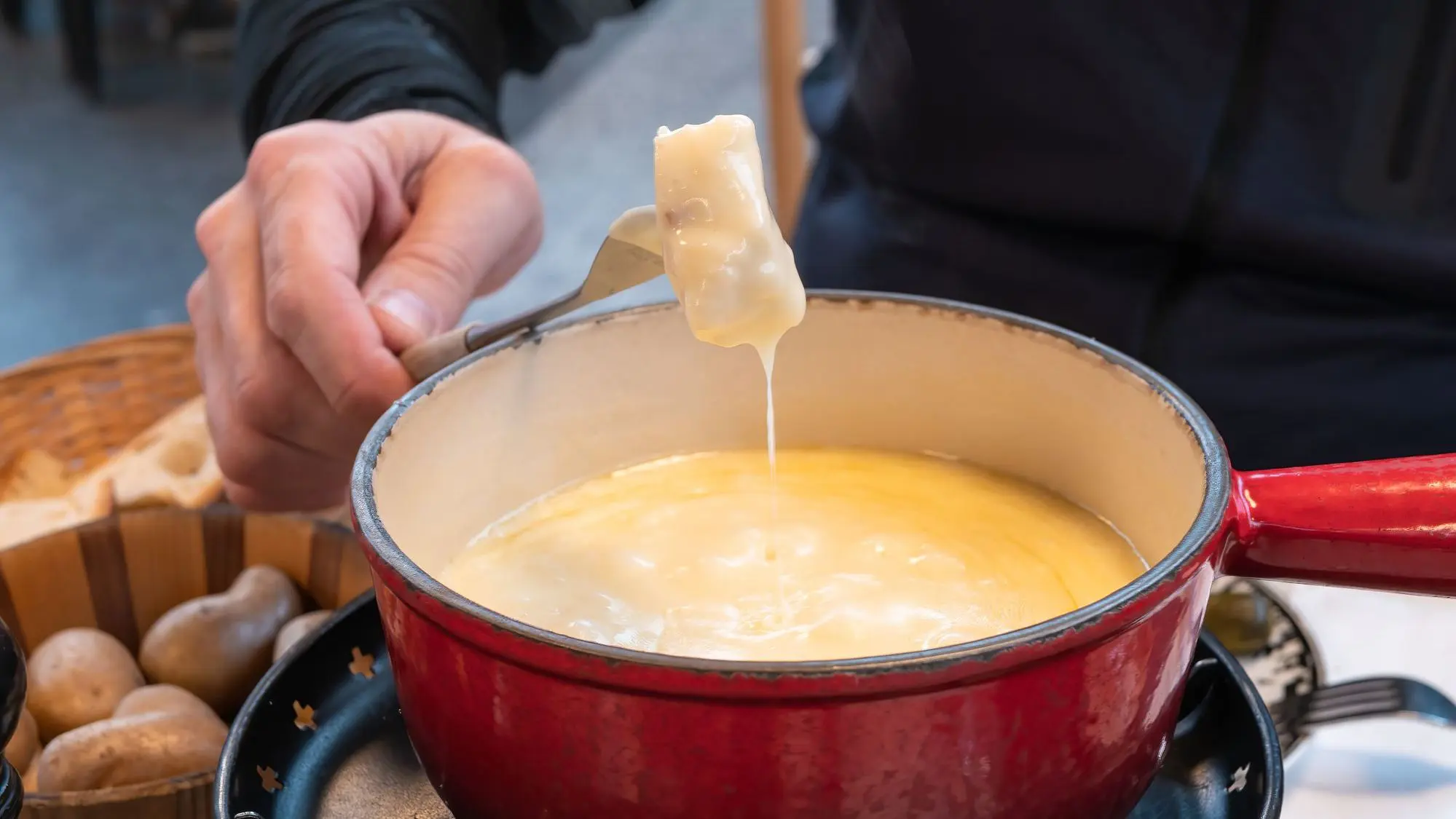
2. Raclette
Raclette joins fondue as one of the typical apres-ski meals in Switzerland, where the culture of sharing takes center stage. Diners will gather around a special grill upon which slices of Raclette, a semi-hard cheese, are melted.
This is then scraped onto a plate of accompaniments, typically boiled potatoes, cold cuts of meat, and pickles. Raclette cheese has a distinctly nutty flavor, which adds a delightful twist.
Much older than fondue, raclette has roots in medieval times when shepherds would carry wheels of cheese up into the Alps and slowly melt portions over open fires. The name also comes from a French verb; racler means to scrape.
As raclette was conceived in the canton of Valais, this is the ultimate destination for experiencing the dish. However, it’s also present throughout the country and may be enjoyed in a wooden chalet in the mountains or at an upscale urban eatery. The most important thing is that raclette is shared.
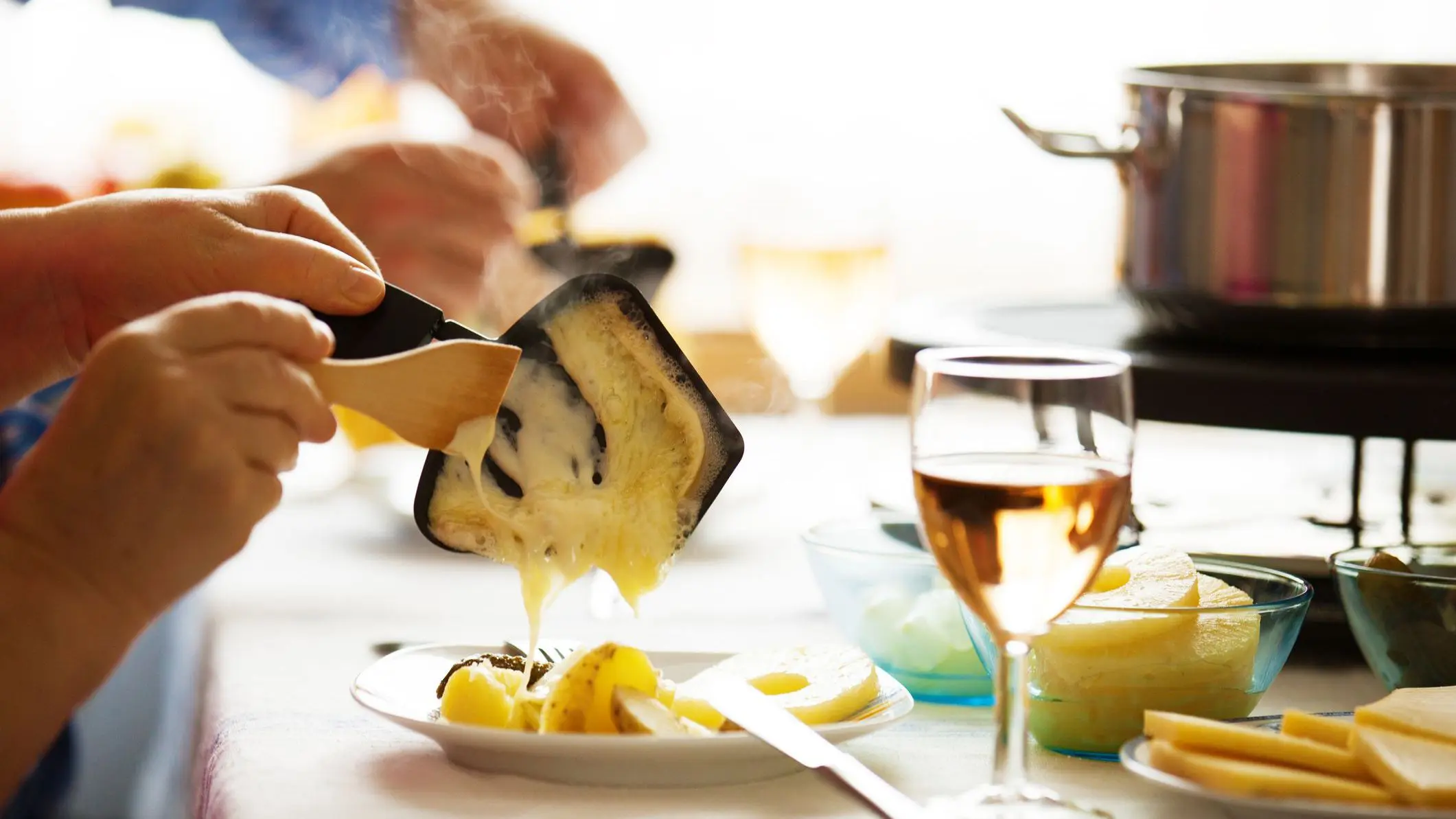
3. Swiss Chocolate
Swiss chocolate is world-renowned for its creamy texture and delectably rich flavor. Production began in the early 19th century when Francois-Louis Cailler opened the country’s first chocolate factory.
This set wheels in motion for a string of Swiss chocolatiers to follow suit, with Daniel Peter credited with inventing milk chocolate in 1875. In fact, he did so by adding powdered milk from his future business partner, Henri Nestlé, to dark chocolate.
Another household name, Rodolphe Lindt, went on to develop the conching process of chocolate-making, which produces the velvety texture associated with his brand.
Pralines and truffles are a cultural emblem of Switzerland, symbolizing precision and craftsmanship while artisanal methods run in tandem with innovation.
Besides purchasing a souvenir box from the countless stores, there is a vast supply of immersive tourist experiences, including chocolate factory tours and workshops throughout the country. The Lindt Home of Chocolate near Zurich is one of the ultimate attractions for those with a sweet tooth.
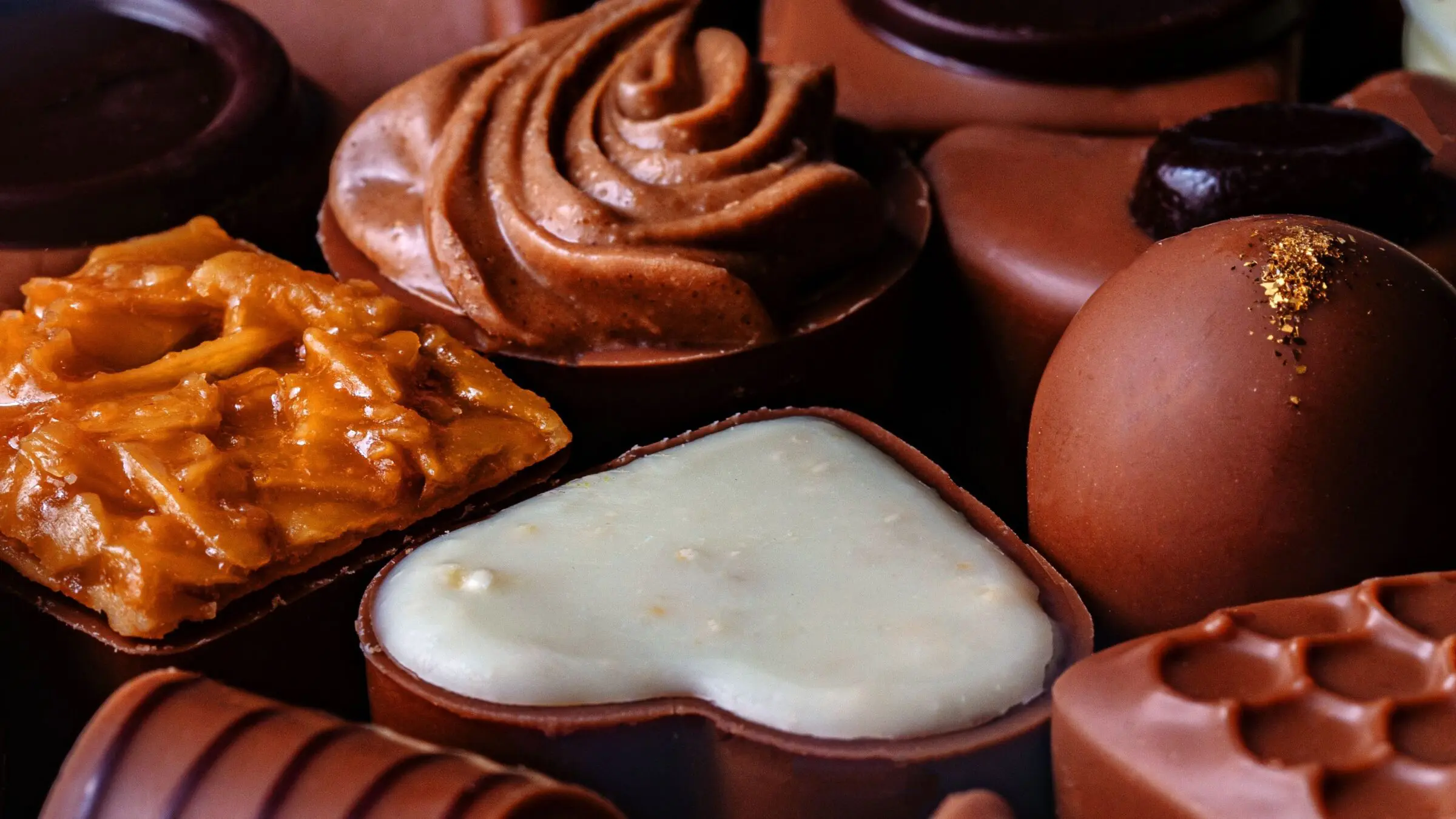
4. Zürcher Geschnetzeltes
Zurcher Geschnetzeltes is a veal stew with mushrooms in a creamy white wine sauce, which became popular during the 1940s. As it comes from Zurich, it is often listed under its local name, Zuri-Gschnatzlets, on menus. This translates to Zurich-style sliced meat, and the stew is valued for its simplicity.
Quality local ingredients and perfect timing are the crucial components of a successful Zurcher Geschnetzeltes. Strips of veal are seared to lock in their juices before being simmered with onions, white wine, cream, and the freshest mushrooms.
Chefs in Zurich stay loyal to the traditional recipe, while others specialize in vegetarian alternatives. Haus Hiltl, the world’s oldest vegetarian restaurant, excels at both kinds.
Zurcher Geschnetzeltes is frequently plated up with Rosti, Switzerland’s beloved fried potato dish.
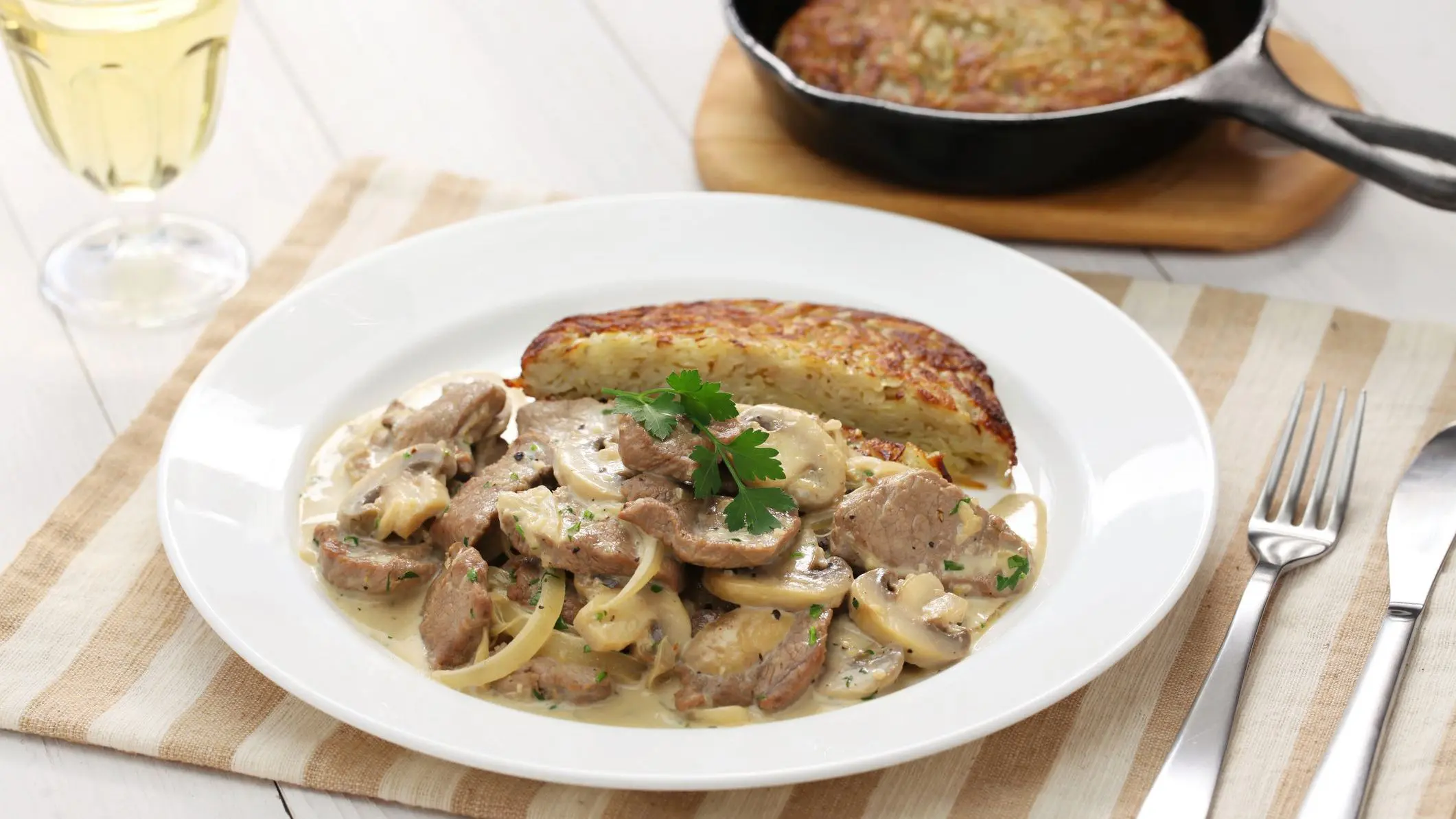
5. Rösti
The national dish of Switzerland hails from the Bernese countryside as a hearty farmer’s breakfast. Rosti is a simple yet satisfying creation of fried potatoes akin to a giant hash brown, and it often tops a local’s list of the best Swiss food.
These days, it’s consumed at any time of day and often topped with bacon, melted Swiss cheese, onions, a fried egg, or sautéed vegetables. The trick to getting the perfect Rosti is to retain a soft center and a crispy coating.
A versatile food item, Rosti is sometimes paired with heftier dishes like Zurcher Geschnetzeltes. Bern is the best place to taste Rosti according to traditional recipes. However, it’s prevalent across the mountain villages of Switzerland’s alpine regions, where it’s particularly comforting during the colder months.
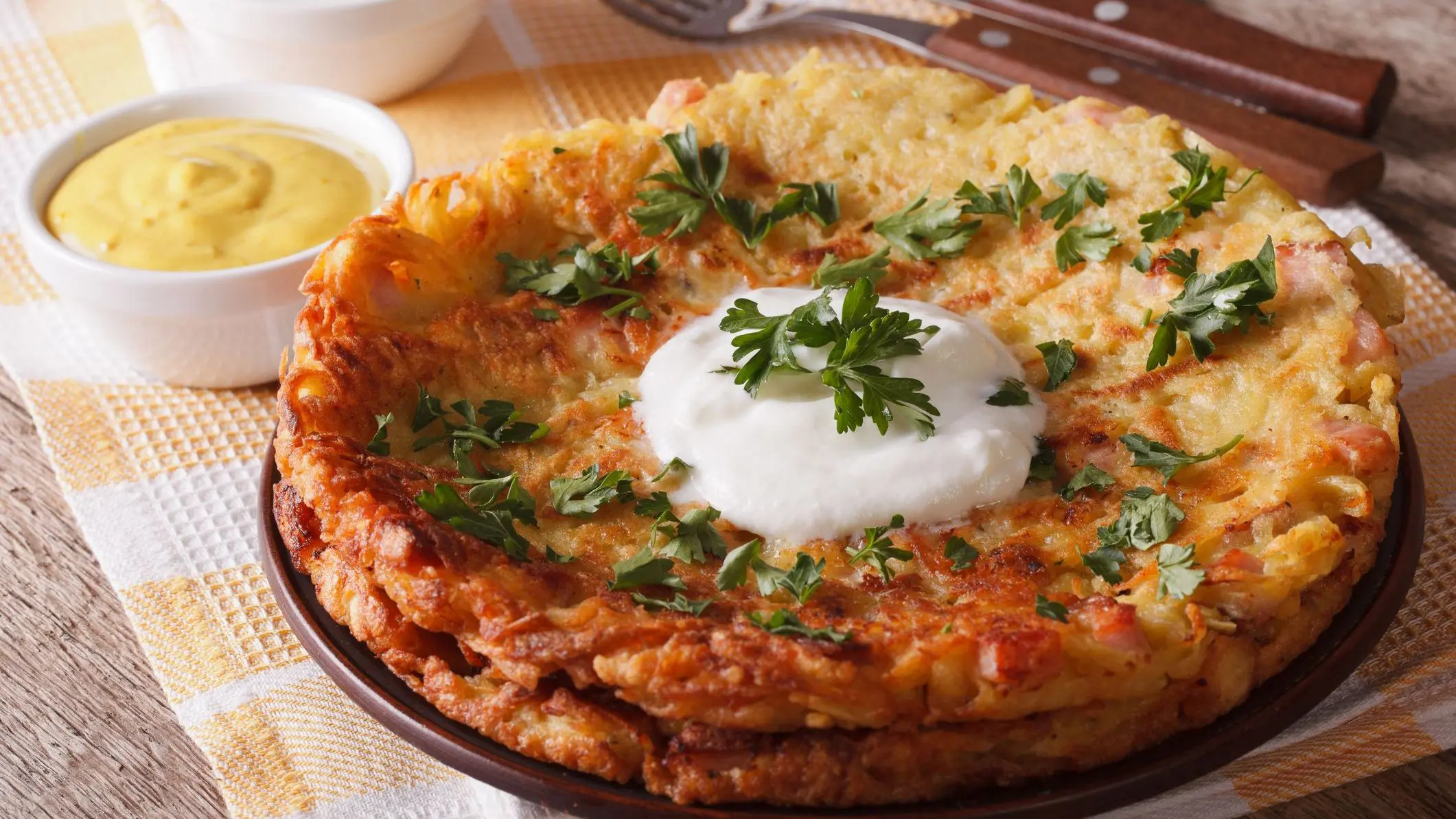
6. Berner Platte
Berner Platte is one of the best things to eat in Switzerland after a hike or a day in the mountains. As the name hints, this meat platter originates from the canton of Bern.
It usually features a medley of smoked pork and beef sausages, bacon, ham, sauerkraut, and small potatoes. The selected meats are cooked slowly, thus allowing their flavors to blend.
The platter made its debut on the Swiss food scene on March 5, 1798, while troops celebrated their victory over the French in the Battle of Neuenegg. Locals gathered whatever they could get their hands on, such as smoked meats, sausages, and beans, and cooked them together.
Even today, Berner Platte stands as a symbol of unity and celebration and is always dished up on a sharing platter.
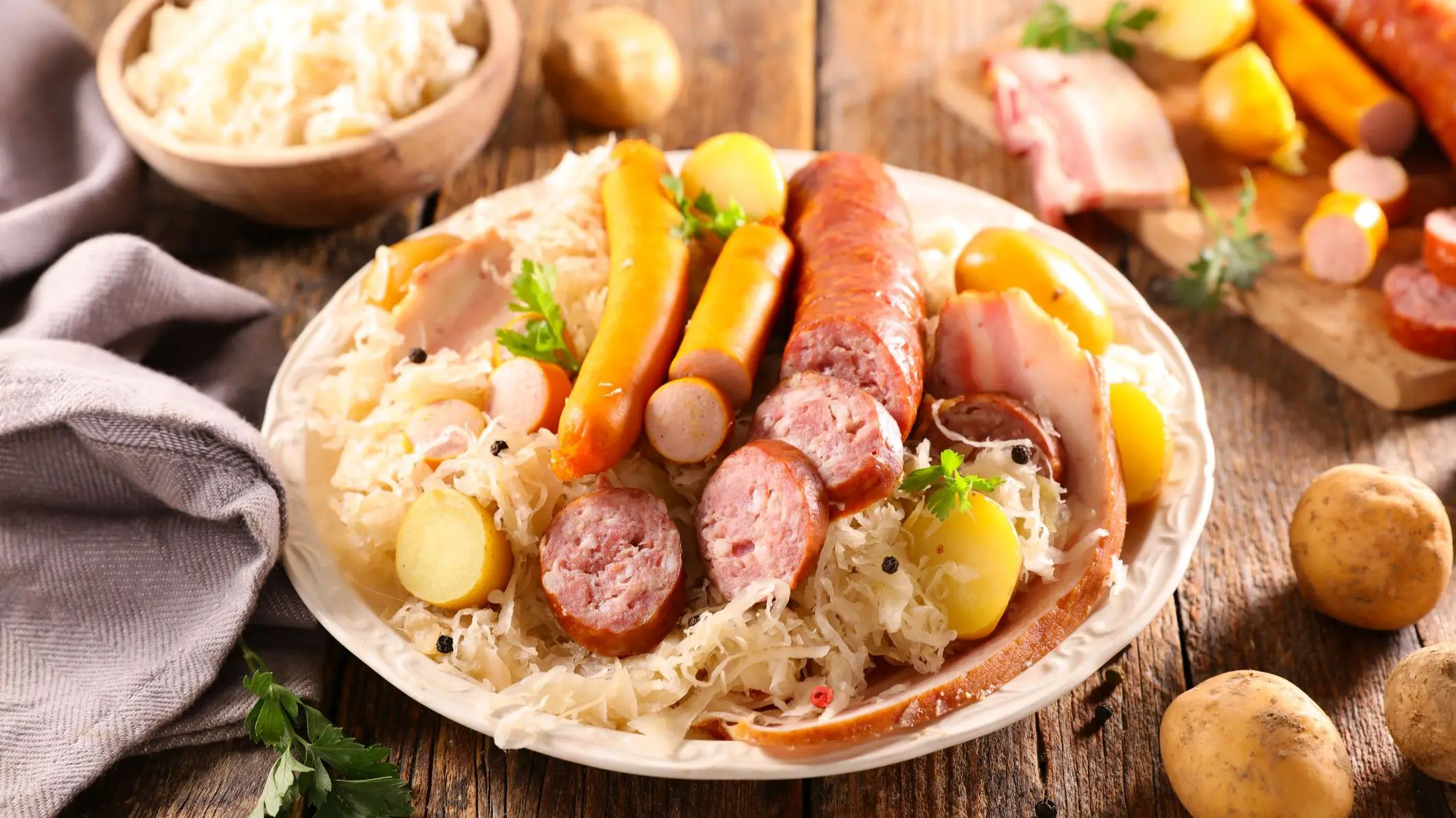
7. Glühwein
Swiss Gluhwein is a spiced mulled wine enjoyed as a winter warmer on the slopes and at Christmas markets. Gluhwein translates to glow wine, in reference to the hot irons once used to heat the beverage. It dates back to medieval Europe when wine was heated and mixed with spices to extend its shelf life.
Although comparable to German Gluhwein, there are subtle differences between the recipes. As with its neighbor to the north, Swiss Gluhwein is made from a base of red wine simmered with such spices as cinnamon, cloves, star anise, citrus peel, and a touch of sugar.
Swiss Gluhwein is a little lighter on the sugar and often includes a dash of Kirsch or schnapps for added tang.
Gluhwein makes its yearly appearance as winter looms and is best enjoyed in the open air at markets or fireside in a cozy tavern.
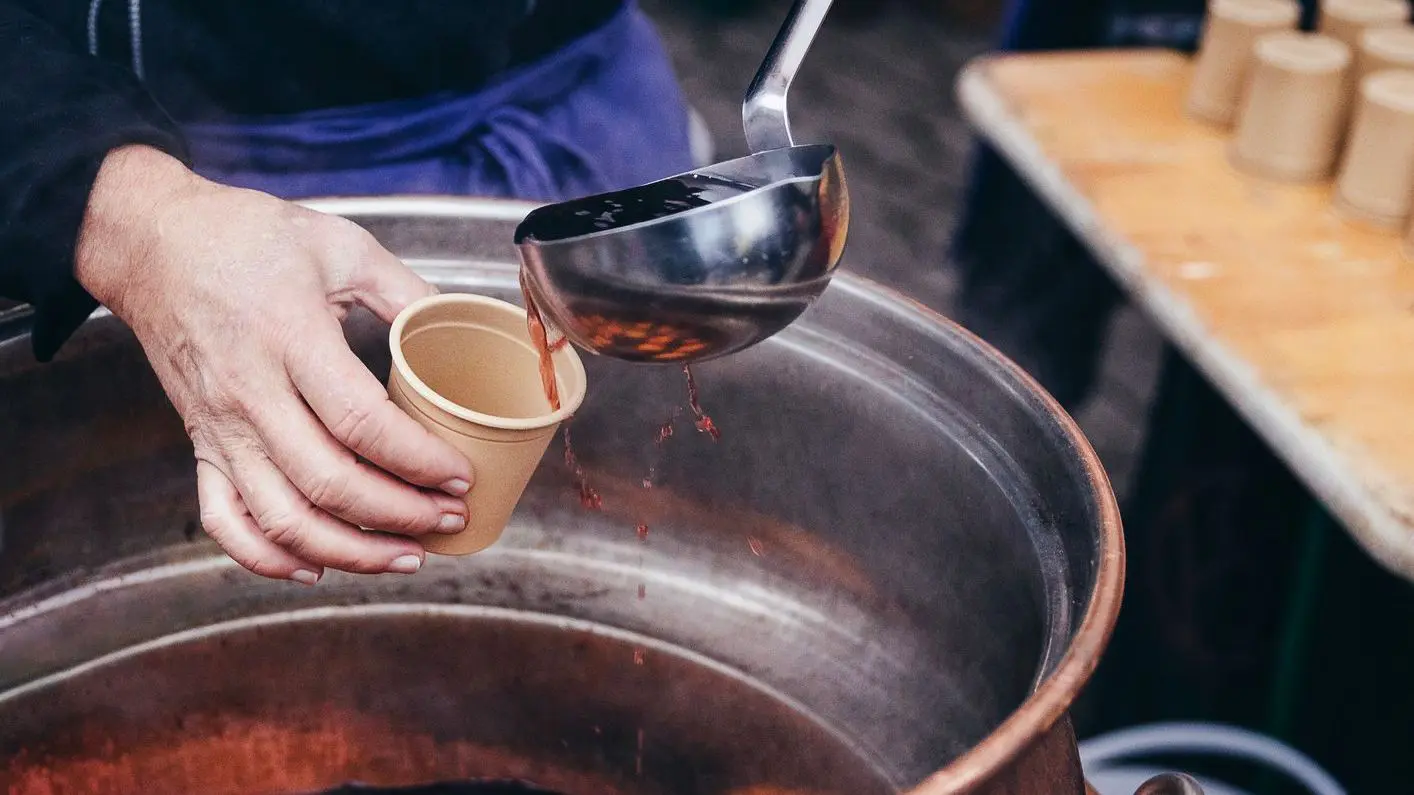
8. Zuger Kirschtorte
Zuger Kirschtorte is a cherry-flavored sponge cake layered with buttercream and the same Kirsch often added to Swiss Gluhwein. This cake hails from the town of Zug in central Switzerland, which is especially revered for its Kirsch, made from the cherries that thrive on the shores of Lake Zug.
The pastry chef Heinrich Hohn created the recipe in 1921 using the region’s cherished ingredients of almond meringue, sponge cake, buttercream, and, of course, the famous cherry brandy. It’s the liqueur that gives the cake its distinct aroma, which is perfectly balanced by the sweetness of the meringue and buttercream.
Zuger Kirschtorte remains a symbol of Swiss patisserie excellence. It’s rare not to see the cherry cake rolled out at birthdays, celebrations, and special occasions. Many Swiss people will tell you that Hohn’s cake proved so popular that travelers would make special stops in Zug simply to purchase it fresh from his bakery.
The original recipe remains in play at Conditorei Treichler in Zug, which pledges to be the birthplace of Switzerland’s iconic dessert.
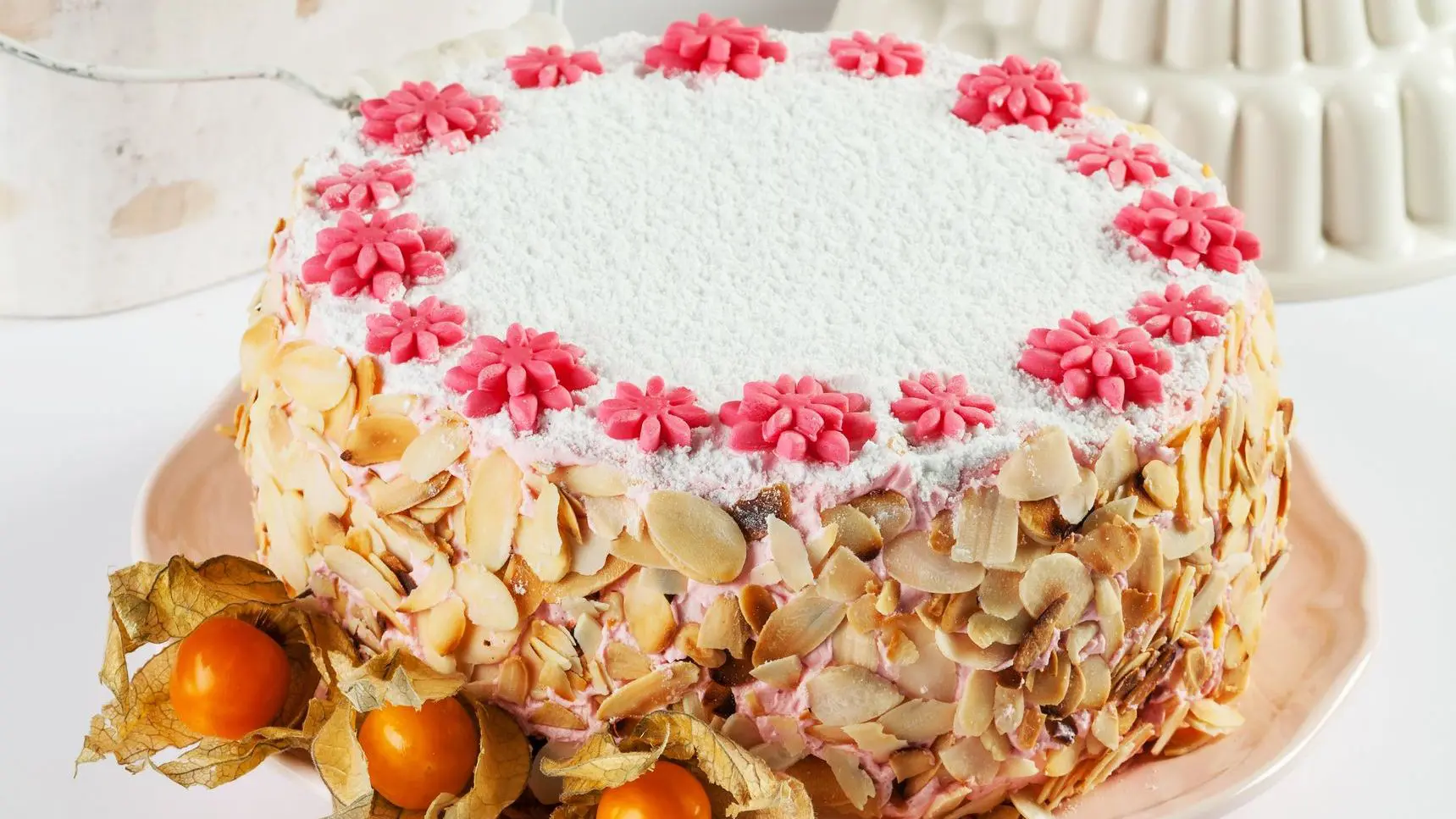
9. Carac
Carac is one of those food items where you need to have an open mind; the color can be a little off-putting at first glance.
This is a beloved Swiss pastry topped with a distinctive green glaze. Originating from the French-speaking regions of Geneva and Vaud, it became a staple in bakeries during the early 20th century.
Although the appearance is somewhat perturbing, the ingredients are simply a buttery shortcrust base, a smooth chocolate ganache filling, and that eye-popping layer of green fondant with a dot of chocolate.
The exact origins are vague, but it’s believed that patissiers created Carac to showcase their skills in pastry-making and working with chocolate. These sweet treats are traditionally enjoyed with a cup of coffee or tea and are widespread during festivals.
Some Swiss towns host baking competitions to find out who can craft the perfect Carac: smooth, shiny, and with not a single crack in the fondant.
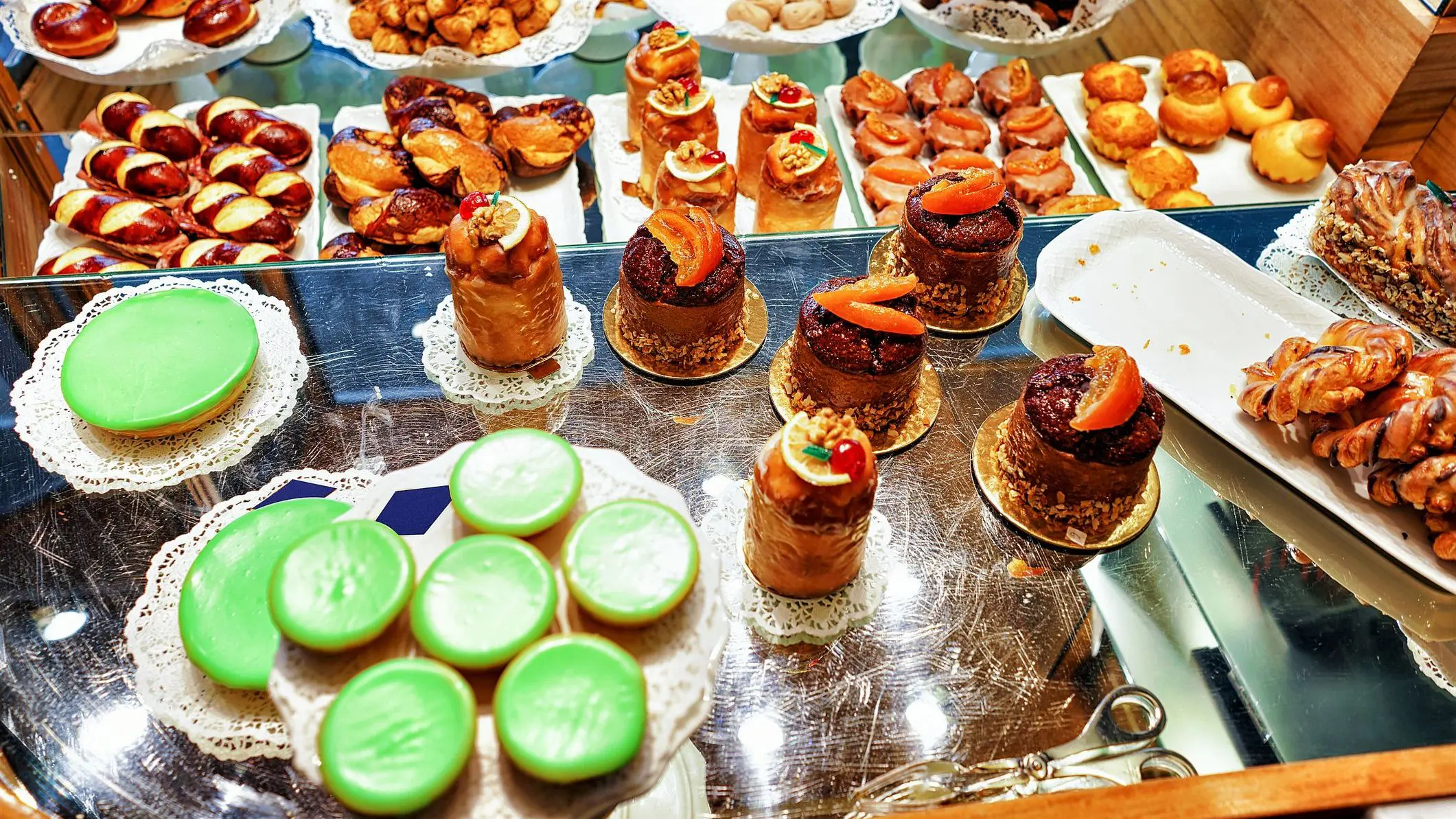
10. Papet Vaudois
Papet Vaudois is a creamy leek and potato stew served with smoked sausage. This is one of the best things to eat in Switzerland while in the French-speaking Vaud region. It is typically served with the famous Saucisse aux Choux, a smoked sausage made with cabbage that’s also native to the region.
This centuries-old stew stands for the rustic cooking of Swiss agriculturalists when leeks and potatoes were staple ingredients. Farmers would combine them with sausage to create a nourishing meal that could be easily shared.
Papet Vaudois is so iconic in Vaud that there is an annual celebration of the dish in November, just ahead of the cabbage season.
Local superstition says that if the sausage casing bursts while cooking, good luck (or an abundance of cabbage and good crops) is on the horizon.
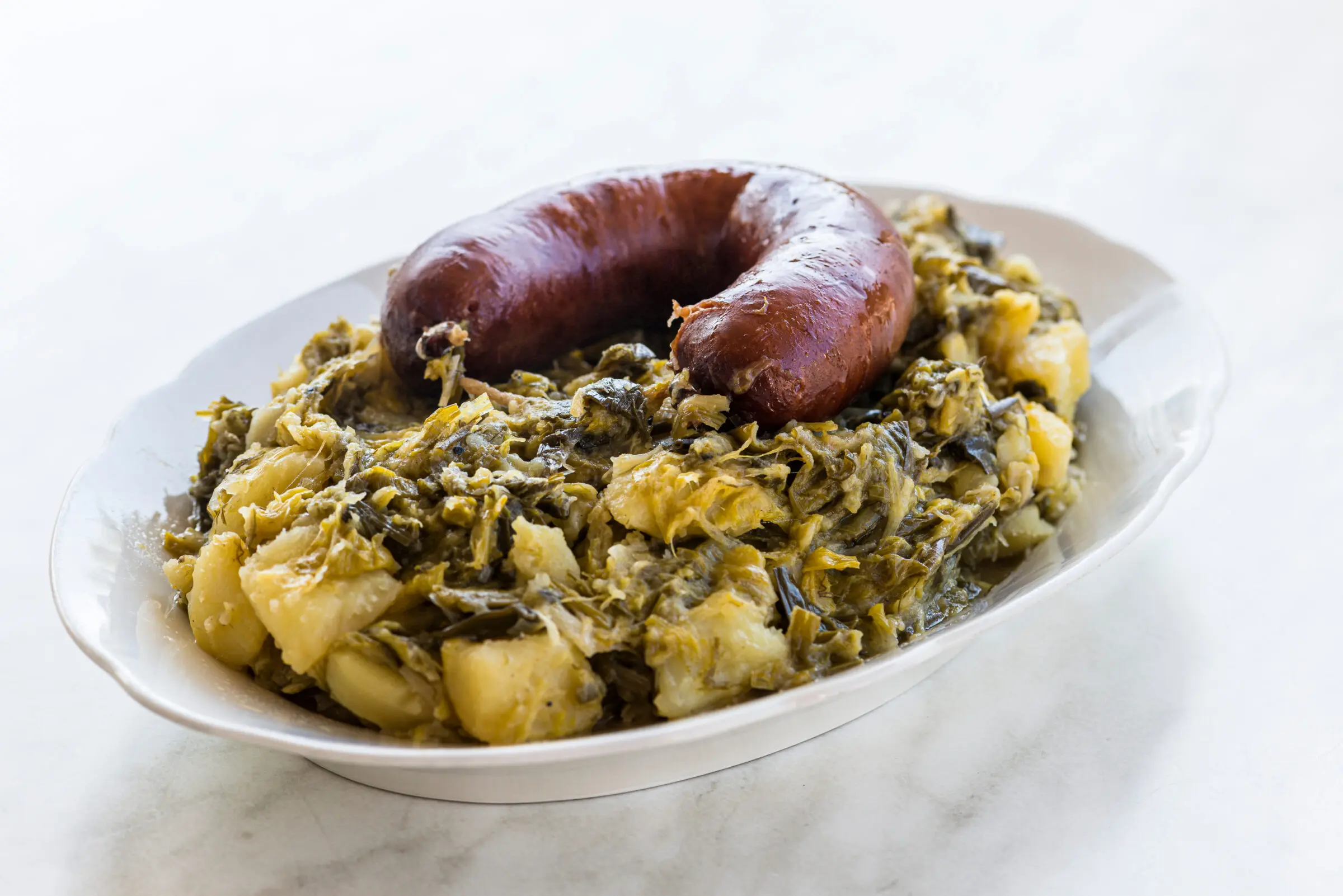
11. Saffron Risotto
Celebrated for its golden hue and earthy flavor, saffron risotto is one of the most unusual dishes on this list of the best Swiss food.
It’s popular in the Italian-speaking Ticino region, where a warmer microclimate and a Mediterranean influence are noticeable. The dish relies upon Swiss-grown saffron from the village of Mund in Valais to produce a particularly aromatic taste.
This crimson spice was first introduced to Switzerland in the Middle Ages by the trade routes. Farmers in Mund discovered that the flower thrived in the mountainous terrain, and it has been cultivated there ever since, becoming a staple in risotto dishes.
Noted for its fragrant taste, Swiss saffron risotto is typically prepared with Arborio rice, white wine, onions, broth, and that crucial pinch of Mund saffron. This dish is often finished off with chopped Luganighe sausage or served alongside roasted vegetables.
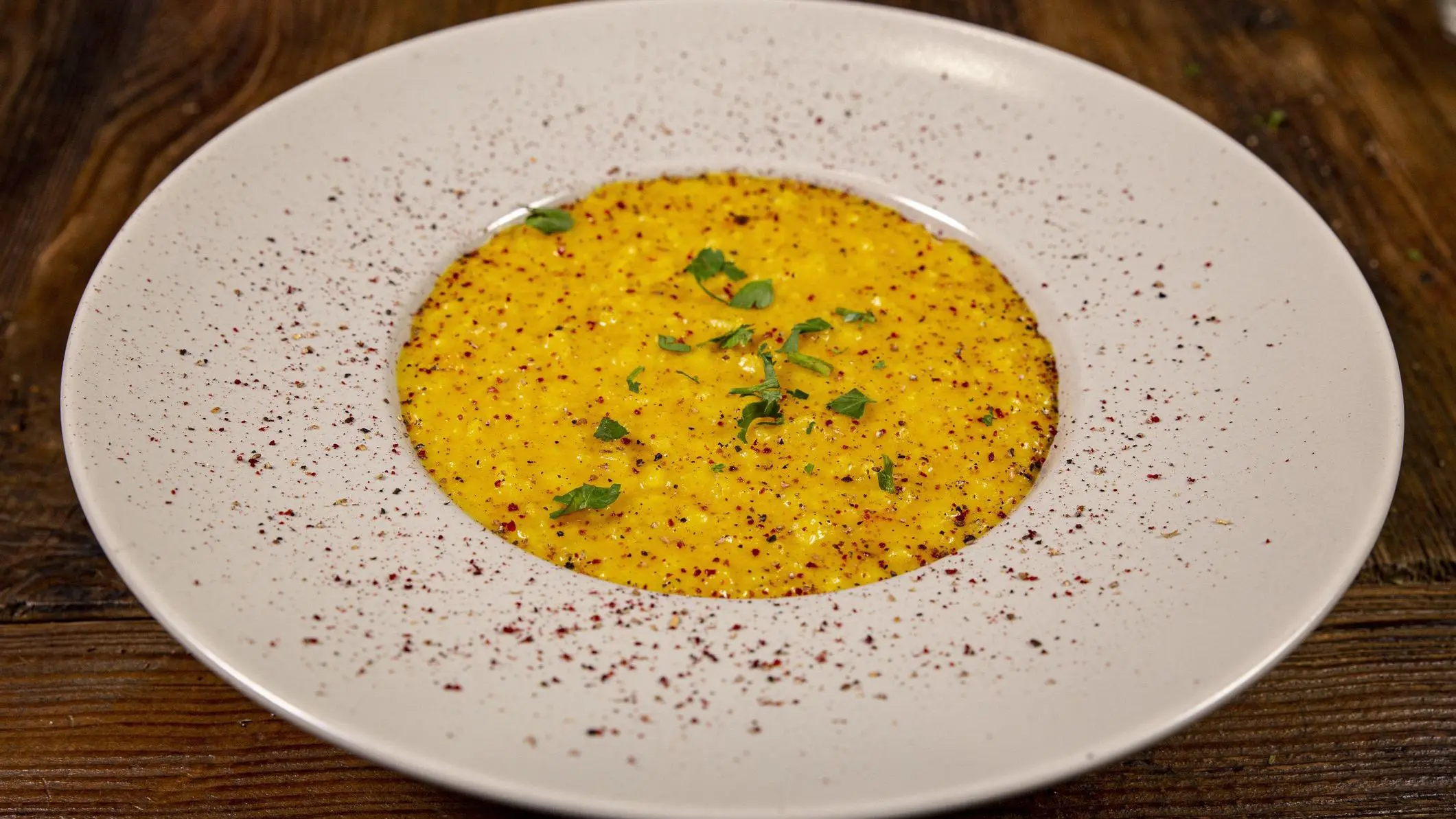
12. Älplermagronen
Alplermagronen is likened to being the Swiss Mac & Cheese. This robust pasta dish comes from the Swiss Alps with its name combining Alpler (Alpine herdsman) and Magronen (macaroni), thus reflecting its original purpose as sustenance for Swiss shepherds.
Back in the day, Alplermagronen was made with ingredients readily available on alpine farms, such as pasta, potatoes, cream, cheese, and onions.
Preparation of Alplermagronen sees potatoes and pasta being stacked in thick layers ahead of being baked with a generous amount of Gruyere or Emmental cheese. A topping of caramelized onions and a side of apple sauce make for a lip-smacking blend of savory and sweet.
Alplermagronen was a roaring success due to its high-calorie count, essential for herdsmen and farm laborers. These days, it remains a firm favorite at ski resorts and on family tables.
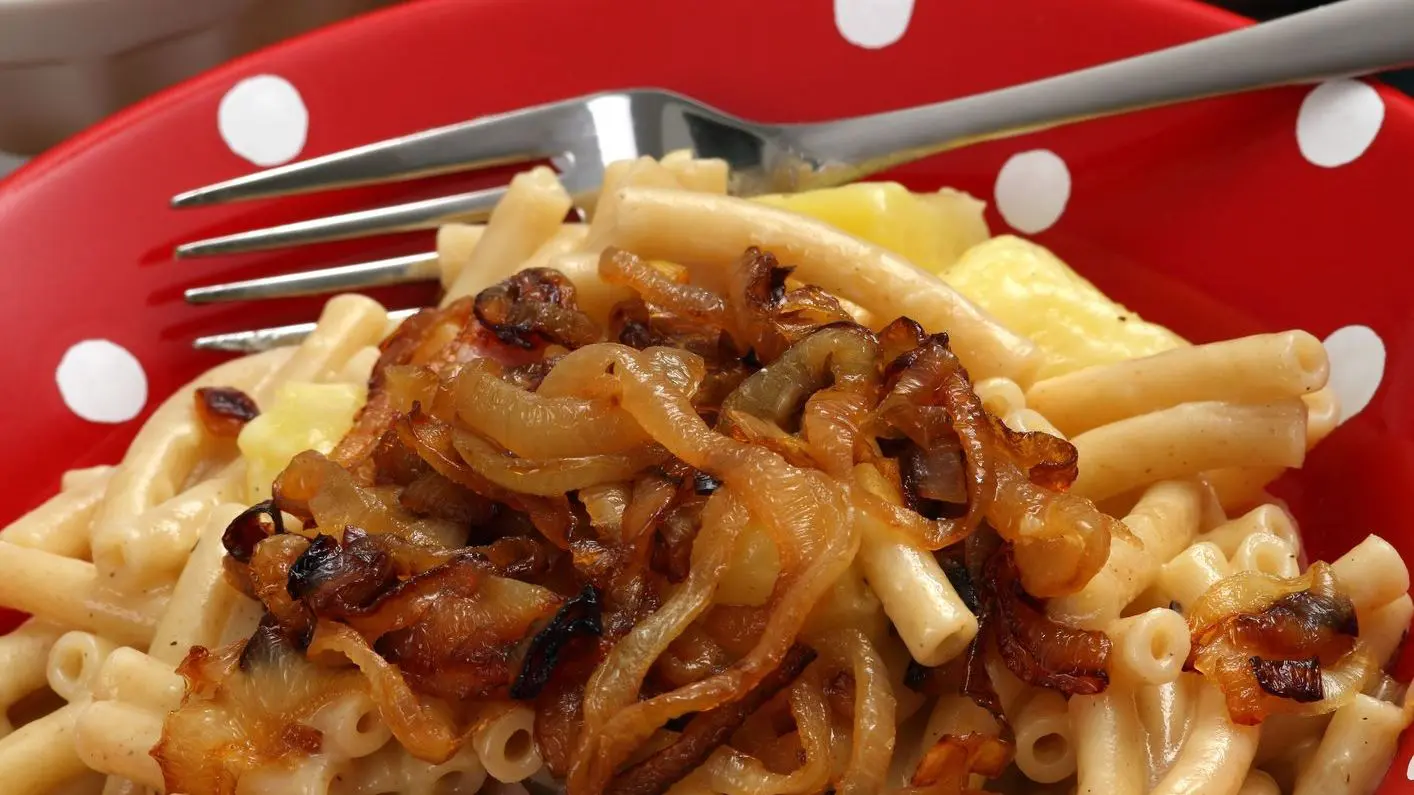
13. Engadine Nusstorte
Engadine Nusstorte is a caramelized walnut tart with a buttery crust, typical of the Engadine Valley in the canton of Graubunden.
The tart comprises a buttery, shortcrust pastry filled with a blend of caramelized sugar, cream, and finely chopped walnuts. The filling yields a slightly chewy texture, with a deep, nutty flavor that contrasts beautifully with the flaky crust.
This rich, caramel-filled walnut tart became a regional specialty in the early 20th century. It was first popularized by local bakers who wanted to create a durable, sweet treat that could be stored for long periods and provide instant comfort during the harsh winters.
Traditionally, households would bake multiple Nusstorten just before the weather turned and store them in the pantry. They would serve it on the side of a warming mug of coffee or tea.
Nusstorten is often gifted during special occasions such as Christmas and birthdays. Its longevity makes it relatively easy to ship and mail it around the world, which proves a hit with Swiss expats living overseas or travelers hungry for more.
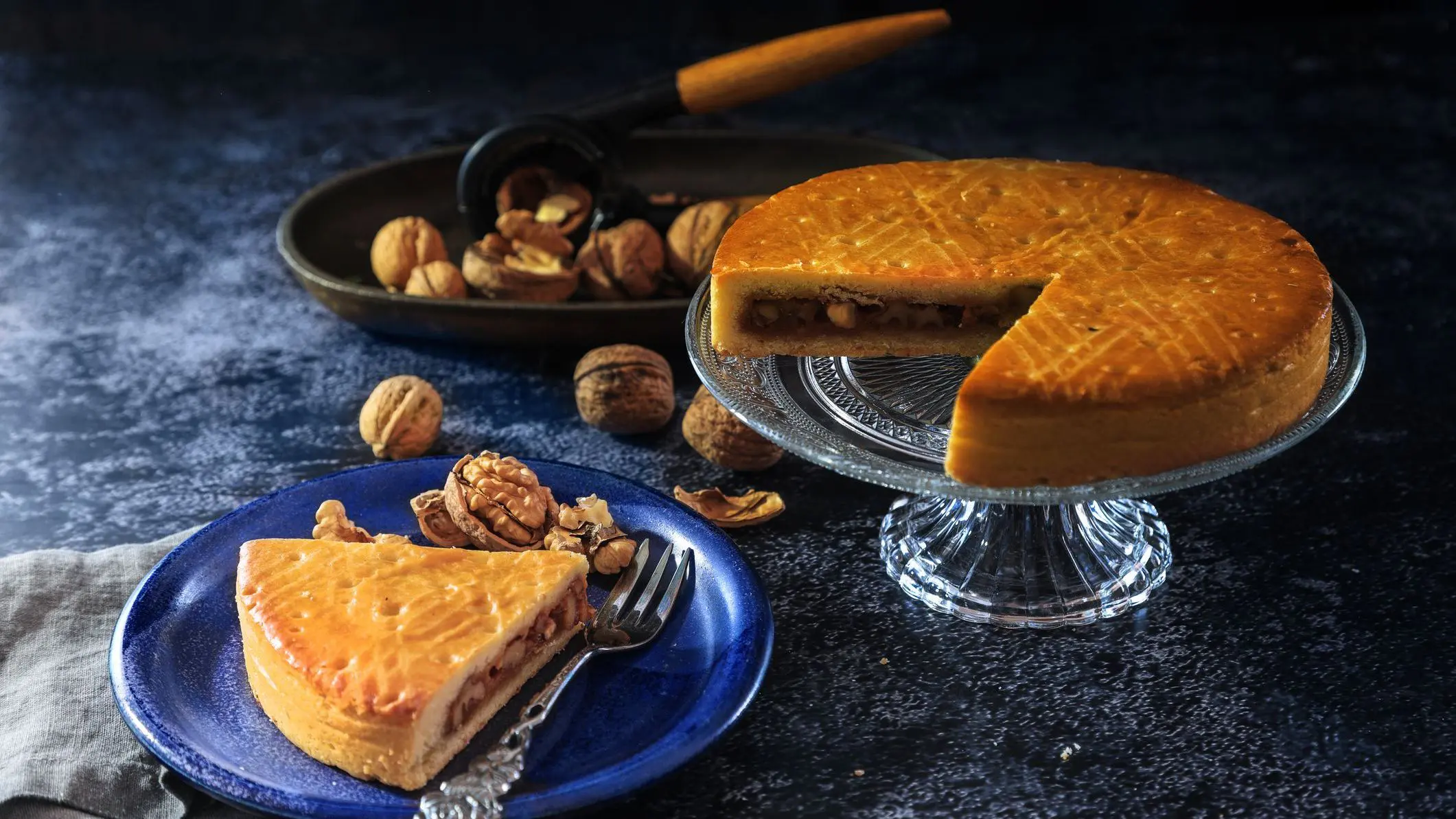
14. Basler Läckerli
Basler Lackerli is a traditional Swiss spiced cookie, which was invented in Basel, one of Switzerland’s oldest cities. It was first crafted by monks in the 14th century as something to enjoy during the festive period and other special occasions.
The name Lackerli derives from the German word lecker, which means delicious. As any Swiss local will tell you, it lives up to its name. The traditional recipe includes honey, almonds, cinnamon, candied peel, and Kirsch.
After baking, the cookies are glazed with the thinnest layer of sugar syrup to provide a glossy finish and added sweetness. It has a chewy texture and resembles a brownie or blondie more than the classic cookie.
It’s rumored that Napoleon Bonaparte was particularly fond of Basler Lackerli during his campaign through Switzerland. The cookies are found throughout Switzerland. However, those eager to sample the purest version of the recipe can visit Lackerli Huus in Basel.
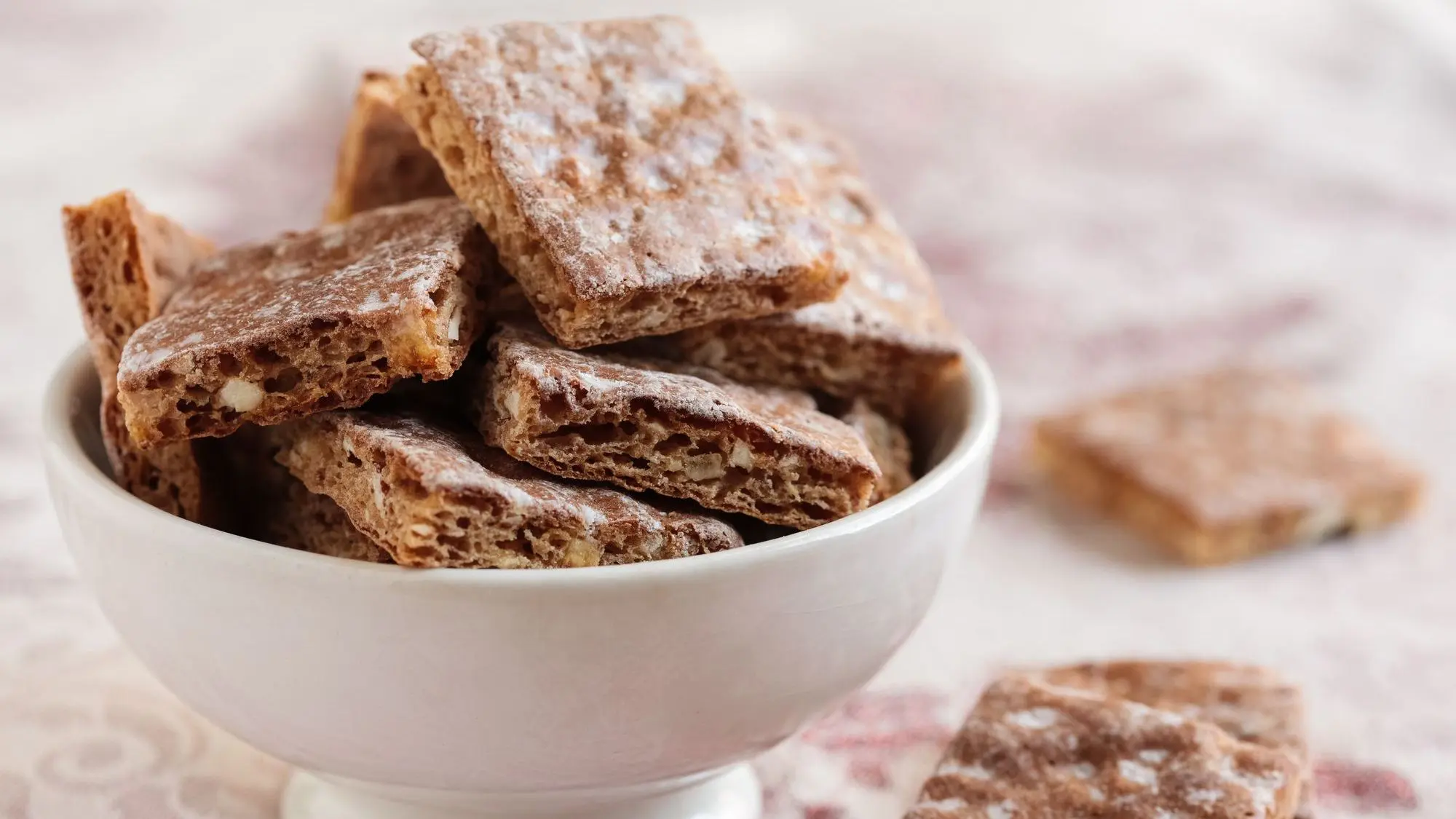
15. Rivella
Rivella is an iconic soft drink from Switzerland known for its distinctive red, blue, and green labels. It was created in 1952 by the Swiss chemist Robert Barth using lactoserum (milk whey), a byproduct of cheese production. Despite its milky foundation, the drink is clear and fizzy, with only the subtlest hint of whey.
The name Rivella was inspired by the Italian word rivelazione, which means revelation and captures the innovative backstory. Rivella comes in three varieties: Rivella Red (the original), Rivella Blue (sugar-free), and Rivella Green (infused with green tea extract).
This popular beverage is the go-to drink after hiking, biking, or skiing, as well as at parties and picnics. It’s rare to meet a Swiss person who doesn’t chug Rivella on the regular. First-time drinkers unfamiliar with the ingredients often presume the whey flavor is a type of fruit or herb.
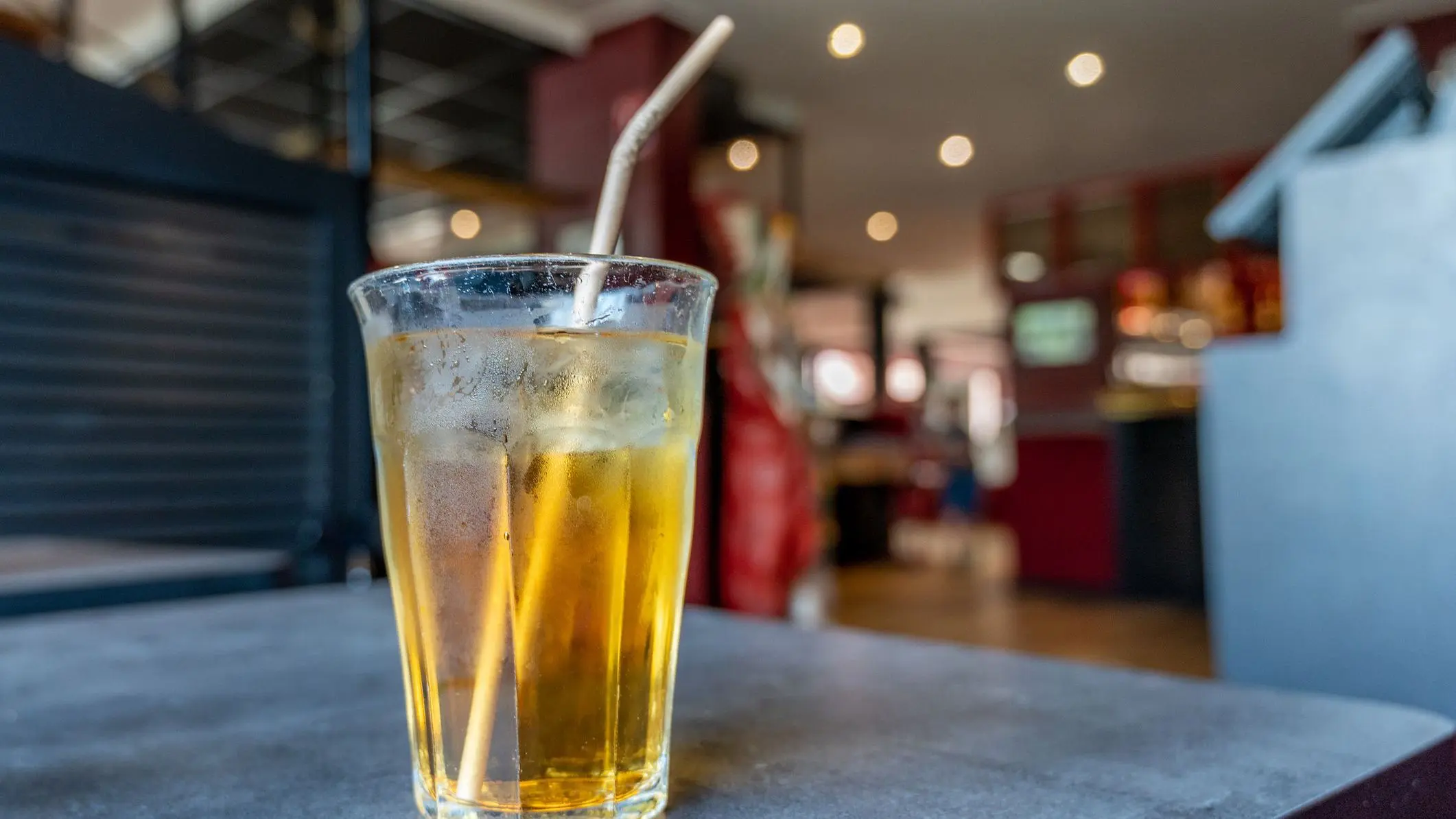
Savor The Best Swiss Food With JayWay
If this article made your taste buds crave the best Swiss food, we’ve got you covered. Our expert trip planners can’t wait to craft the perfect Switzerland itinerary for you, promising an unparalleled travel experience to remember for years to come.

Born and raised in Athens, Maria’s passionate about travel and storytelling, a combination that makes her ideal for her role as our content manager.